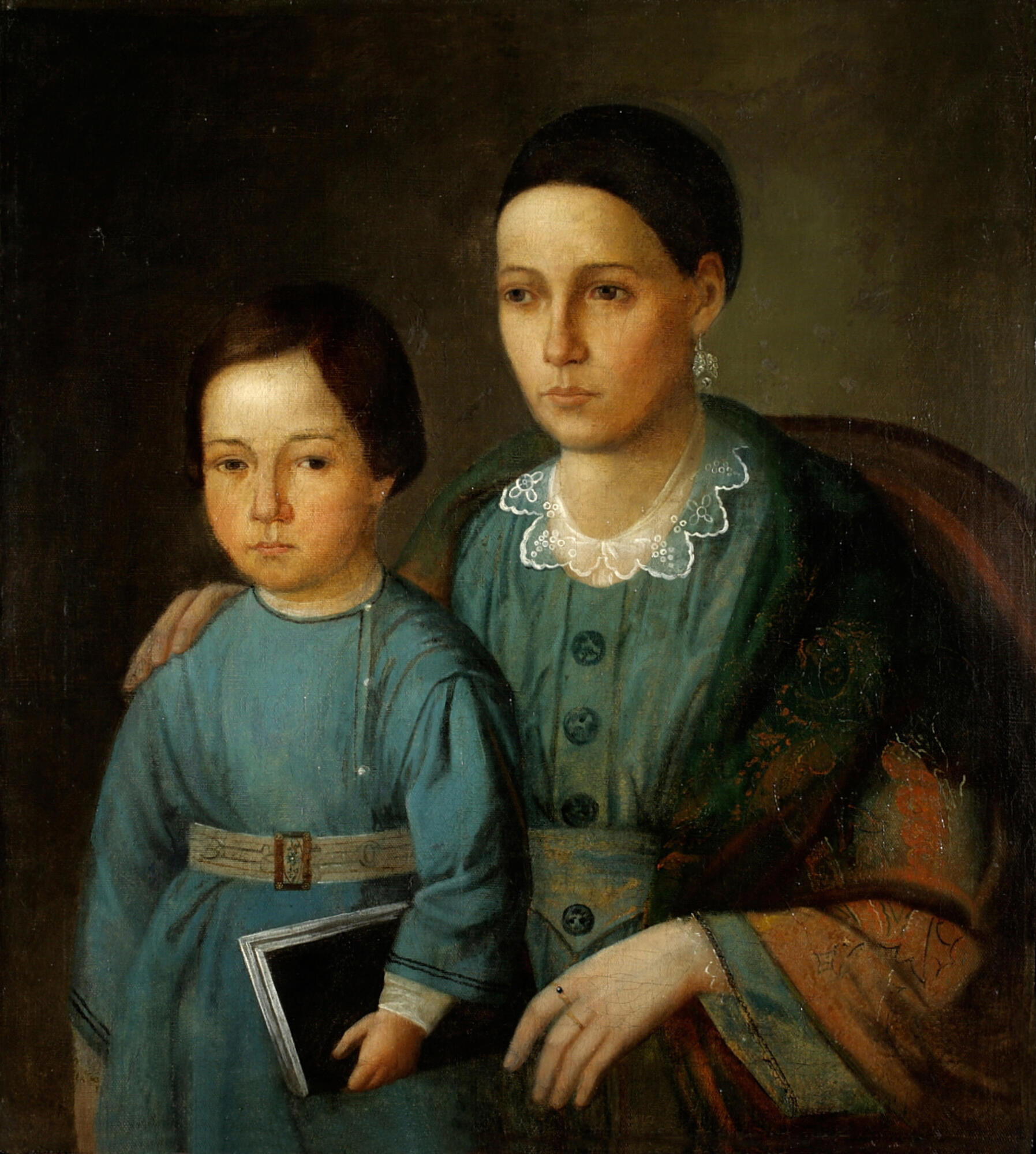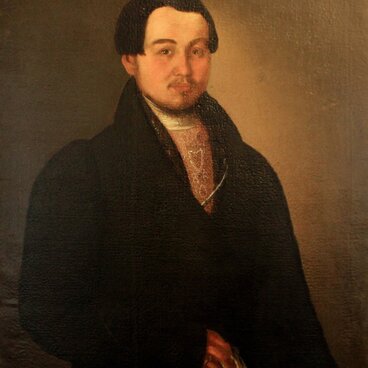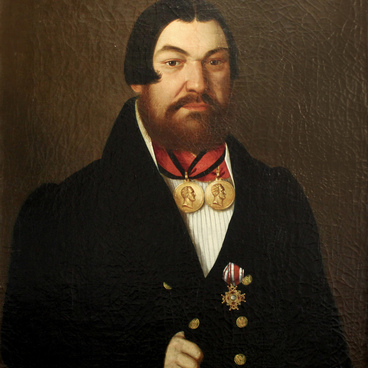The Uglich Museum houses the “Portrait of Yagodina and Her Son” by an unknown artist. The painting entered the museum along with its twin picture — “Portrait of Yagodin with His Daughter”. The canvases were preserved against all odds: they were discovered in the attic of an old city house in the mid-20th century and handed over to the museum. The portraits needed urgent repair, and it was not until their thorough restoration that they took their place in the exhibition.
The portraits are fine specimens of children’s images that were rather uncommon in the provincial painting of the first half of the 19th century. No reliable information has been found about the Yagodins, though people with this surname still live in the city.
Little Yagodin is portrayed at an age when boys began to learn to read and write — they were sent to school or to a private tutor who would help them master reading, writing, and counting. His long Russian-style shirt (“kosovorotka”) is buttoned up and tied round with a belt according to the old rules of men’s dressing (it being totally unacceptable to stay “unbuttoned” or “disheveled”, that is, with the collar open). The child’s face retains a calm and serious expression, which the family considered essential when posing for a portrait.
The young dark-eyed woman, attractive and somewhat melancholic, is dressed in the fashion of the 1840s, which abandoned the frills of the previous decade in favor of simpler clothing. Her plain dress with flared sleeves is complemented with a white front gusset with festoons at the collar and a shawl to match the dress. However, what was considered truly “in vogue” at the time were more complex and richly decorated double pagoda-shaped sleeves. The woman has a thick dark headband completely hiding her hair. The mother’s jewelry is in stark contrast to what was common in the merchant circles of the time (with an abundance of pearls, and rings with colored stones on fingers). Large earrings and plain thin rings were no longer considered to indicate the family’s social status.
The artist who painted the family remains unknown. He was probably one of the artisans who worked on orders from “respectable citizens”.
The portraits are fine specimens of children’s images that were rather uncommon in the provincial painting of the first half of the 19th century. No reliable information has been found about the Yagodins, though people with this surname still live in the city.
Little Yagodin is portrayed at an age when boys began to learn to read and write — they were sent to school or to a private tutor who would help them master reading, writing, and counting. His long Russian-style shirt (“kosovorotka”) is buttoned up and tied round with a belt according to the old rules of men’s dressing (it being totally unacceptable to stay “unbuttoned” or “disheveled”, that is, with the collar open). The child’s face retains a calm and serious expression, which the family considered essential when posing for a portrait.
The young dark-eyed woman, attractive and somewhat melancholic, is dressed in the fashion of the 1840s, which abandoned the frills of the previous decade in favor of simpler clothing. Her plain dress with flared sleeves is complemented with a white front gusset with festoons at the collar and a shawl to match the dress. However, what was considered truly “in vogue” at the time were more complex and richly decorated double pagoda-shaped sleeves. The woman has a thick dark headband completely hiding her hair. The mother’s jewelry is in stark contrast to what was common in the merchant circles of the time (with an abundance of pearls, and rings with colored stones on fingers). Large earrings and plain thin rings were no longer considered to indicate the family’s social status.
The artist who painted the family remains unknown. He was probably one of the artisans who worked on orders from “respectable citizens”.


